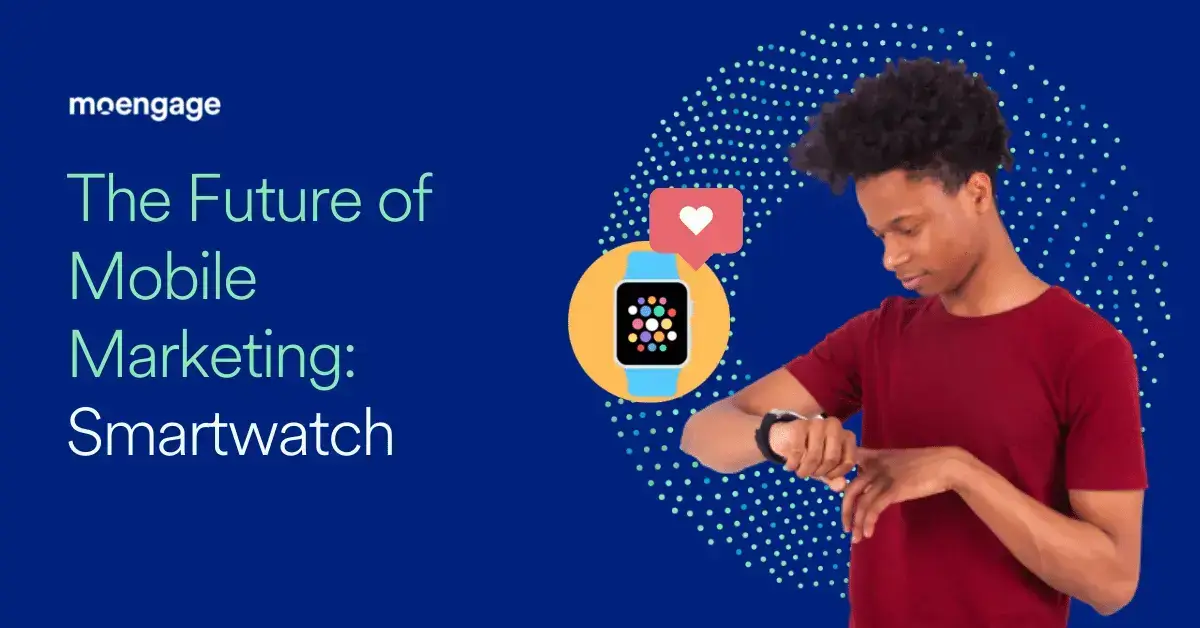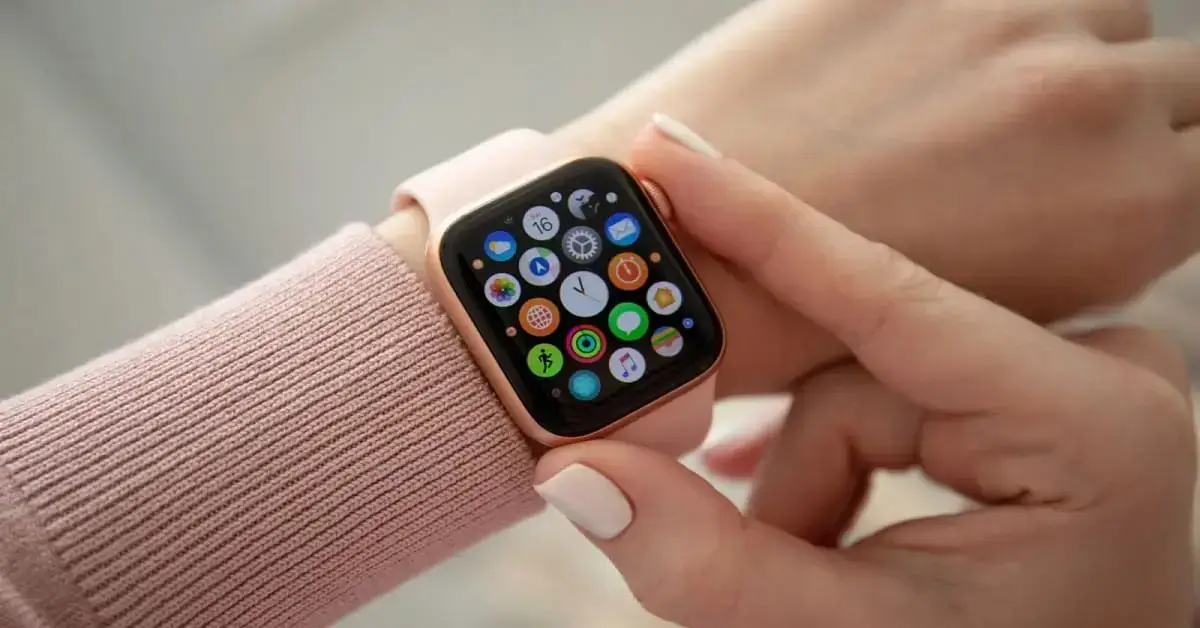The Future of Mobile Marketing: Smartwatch
Targeting users Who Pair Their Apple Watch to Their iPhone

Reading Time: 5 minutes
It’s insane to see how a simple item such as the watch has developed over the past few decades.
From the traditional pocket watch to the more modern wristwatch, the watch has become an essential part of our everyday lives.
And now, with the advent of smartwatches, it is becoming even more indispensable.
For example, smartwatches allow us to do things that were once impossible, like track our fitness levels, receive notifications and even manage our cryptocurrency assets. They’re also becoming increasingly popular, with companies like Apple selling massive amounts of their Apple Watch each year.
This presents a unique opportunity for marketers and advertisers. With the ability to target users who pair their Apple Watch with their iPhones, marketers can now reach their audience in a more personal and intimate way.
So, what does this mean for the future of mobile marketing?
Continue reading to find out our take on the future of mobile marketing and how targeting users who pair their Apple Watch with their iPhone can help you stay ahead of the curve.
Apple Watches Rely on App Users Who Also Use iPhones
The future of mobile marketing may very well lie in targeting users who own an iPhone. Since Apple Watches don’t work with mobile websites, you’ll need to create an app compatible both with the watch and the phone to target your customer via smartwatches.

This marketing approach is more beneficial for businesses than simply having a mobile website because an app is more constant on a person’s wrist than a website is on a person’s phone. Even if a person isn’t thinking about your product, they will see it every time they check the time, which will, in turn, keep your brand name in their mind.
Micro-segmentation will be key to driving more conversions because you can now target a specific audience with laser precision. Take, for instance, customers who live outside of the US or speak a different language than English. If you took the time to learn basic phrases of that language and updated your app to include these phrases on your customers’ smartwatches, you could take your personalization efforts to the next level.
Contextual And Relevant Ads
The other side of mobile marketing is creating contextual and relevant ads, which can be difficult on a small screen, but it’s not impossible. With the help of marketing data, you can target ads to users based on their location, time of day, and even what they are doing.
For example, if you own a coffee shop, you could target ads to people near your shop during the morning hours. Or, if you’re a clothing retailer, you could target ads to people who are near fashion boutiques.
The key is using marketing data to create contextually relevant ads targeted to your audience. By doing this, you’ll be able to reach a larger audience and create a more successful marketing campaign.
Listed below are a few things that marketers should keep in mind when targeting ads to users who pair their Apple Watch with their iPhone:
- The rise of personalization: Personalization will be key when focusing on contextual and relevant ads – you’ll need to target ads to users based on their specific needs and interests. Don’t take the approach of creating one ad and hoping that it appeals to everyone. Instead, create multiple ads that will be relevant to different audiences.
- The need for context: With a smartwatch, consumers can receive information at any time and place. This means that marketers must be aware of the context in which their message is being received and adjust accordingly.
- The importance of brevity: Since users will only have a limited amount of space on their smartwatch screen, marketers need to be concise and to the point with their messaging.
- The power of location: As mentioned above, with smartwatches, you can target ads to users based on their location. Localization is a powerful tool that you can use to reach a specific audience.
- The potential of Augmented Reality: As smartwatches become more advanced, they will be able to take advantage of new technologies, such as Augmented Reality. AR could be used to create interactive experiences for users or to provide information about products in a more immersive way.
- The importance of data: As with any marketing campaign, it is vital to track data and analyze the results. This will help you to see what is working and what isn’t so that you can adjust your strategy accordingly.
Increasing Engagement Begins Now
Introducing smartwatches to the marketing world will surely shift how we engage with consumers.
The average person checks their phone 344 times per day, but that number could increase significantly with a smartwatch.

While checking your phone when on a date or spending time with your family is considered impolite, glancing at your watch is perfectly acceptable. Thus, smartwatches will become an important addition to any marketer’s toolkit because they provide a new level of access to consumers.
But smartwatches offer opportunities for other industries as well. For example, medical institutions and health clinics can use them to get in touch with patients and remind them of upcoming appointments. One of the best ways to contact patients right now is through patient communication skills such as Mend’s scheduling tool, Weave’s appointment reminder tool, or Acuity’s scheduling system, smartwatches present another opportunity to reduce no-shows and keep doctors’ schedules full.
Slow and Steady Wins the Race
With the release of the Apple Watch, many people are wondering what the future of mobile marketing looks like. While it’s still too early to tell for sure, we can take a few guesses based on the current trends.
It’s important to remember that not all new technologies are adopted immediately. It took several years for smartphones to become mainstream, and we can expect the same for smartwatches.
Instead of expecting instantaneous results, businesses should focus on creating long-term strategies that will slowly but surely reach more and more people. By taking a slow and steady approach, marketers can build a solid foundation for future success.
For example, work on incorporating crypto into your app so that you can receive and store cryptocurrency payments received from your customers. This forward-thinking approach will put you ahead of the curve and allow you to tap into a new market when smartwatches finally become mainstream.
Finally, don’t forget about the power of push notifications. When used correctly, push notifications can be an extremely effective tool for engaging with users.
Take, for instance, notifications that notify customers about mobile card payments made at your store. With smartwatches, people can feel safe and secure knowing that they’ll be able to receive notifications about their transactions immediately.
Smartwatches Are the Future
While many companies have dropped smartwatches, Apple seems to be the only one creating buzz around the future possibilities of wearable devices. The Apple Watch has opened up a whole new world of opportunities for businesses – with its ability to track data and engage with users in a more personal way, the smartwatch is sure to revolutionize the world of marketing.
As you begin to plan your marketing strategies for the future, keep the power of the smartwatch in mind. By taking a slow and steady approach, you can build a solid foundation for success.







